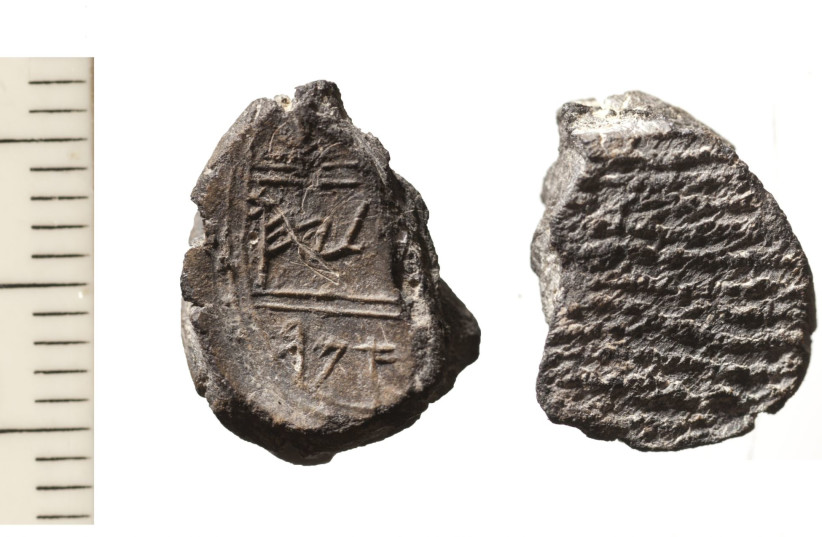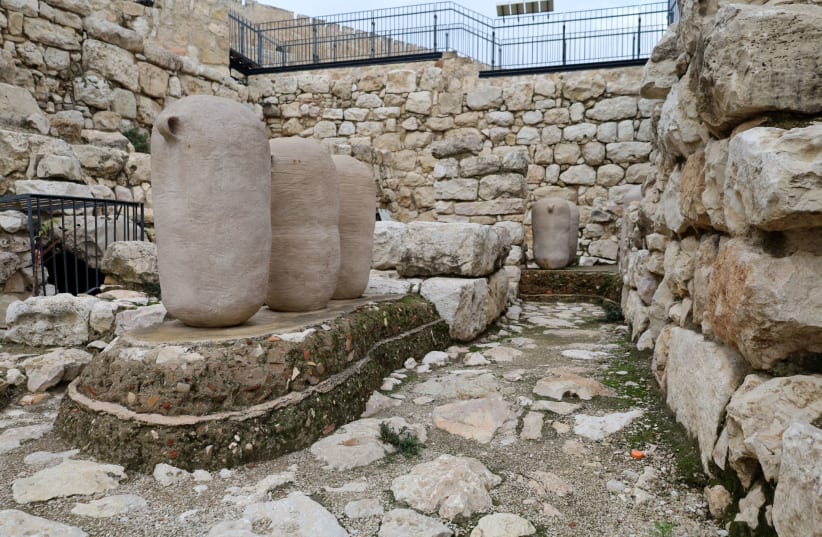New research on several artifacts dating back 2,600 years and uncovered in the area of the Temple Mount or its immediate proximity has shed light on where both the Temple and the Kingdom of Judah’s treasuries once stood, two Israeli archaeologists have suggested.
The two, Zachi Dvira and Dr. Gabriel Barkay, analyzed dozens of clay seals that were found over the decades by sifting soil from the holy area – where archaeological digs are not allowed – as well as from excavations at Ophel Park, adjacent to the southern wall of the Old City.
Clay seals were used in antiquity to sign documents or containers, ensuring they would reach their recipients closed and untouched. The seals could bear symbols or inscriptions.
“Scholars usually don’t consider the back of the seals, but by doing it, a lot can be learned, especially about the type of objects they were attached to,” said Dvira.
By analyzing the seals, the scholars realized that a significant number of the artifacts carried impressions of woven fabrics on their reverse. This likely indicated that they were used to seal small bags filled with precious metals.


This was true both for seals from the Temple Mount and for those found in an impressive public building dating to the First Temple period uncovered in the Ophel Park. The building was unearthed during excavations in the 1970s and 1980s and referred to as the “royal building.”
According to the researchers, whose finds were recently published in the Jerusalem Journal of Archaeology, it shows the presence of two different treasuries, one for the Temple and one for the kingdom.
“The back of most clay seals found in other areas showed that they were used to seal other kinds of objects, for example papyruses and therefore documents,” Dvira said.
The seals often bear names that archaeologists attribute to either the owner of the objects sealed with them, or the officials in charge of managing their belongings.
In their work, Dvira and Barkay also focused on an inscription on a specific clay sealing discovered years ago, offering a new reading of the visible paleo-Hebrew letters it bears. They suggested that the full name of “_lyhw son of _mr” was “Hisilyahu son of Immer.”
A Pashhur son of Immer is mentioned in the Bible as a member of a priestly family serving in the Temple around the sixth or seventh century BCE, the same period to which the clay sealing dates.
“Pashhur son of Immer, the priest who was chief officer of the House of the Lord, heard Jeremiah prophesy these things,” reads the 20th chapter of Jeremiah. “Pashhur thereupon had Jeremiah flogged. For thus said the Lord: I am going to deliver you and all your friends over to terror. And I will deliver all the wealth, all the riches, and all the prized possessions of this city, and I will also deliver all the treasures of the kings of Judah into the hands of their enemies: they shall seize them as plunder and carry them off to Babylon.”
“Hisilyahu could have been his brother,” said Dvira, noting that at that time “paqid” and “nagid,” the titles used in Jeremiah to describe Pashhur, referred to Priests and Levites who were appointed over the treasuries. It was common for several family members to share the task.
